There were glitches in the states ability to report last week, such that Thursday’s numbers were not released until Friday evening along with that day’s counts. Nonetheless, there was much to be pleased about. You can play with the numbers yourselves on KHPI’s Tableau Public website.
Cases and rates still falling nicely.
Seven-day averages of New Cases and Kentucky’s overall Test Positivity Rate continue to fall in parallel, approaching where they were in early December 2021. The 7-Day average of new cases continues to fall faster than the 14-Day average– another good sign. Each individual weekday’s count of cases is demonstrably lower than the same weekday of previous weeks, often dramatically so. Semi-log plots of new cases demonstrate an increasingly more rapid fall in the rate of new case accumulation. This is all good, but over 2000 new cases per day should not be considered good enough.
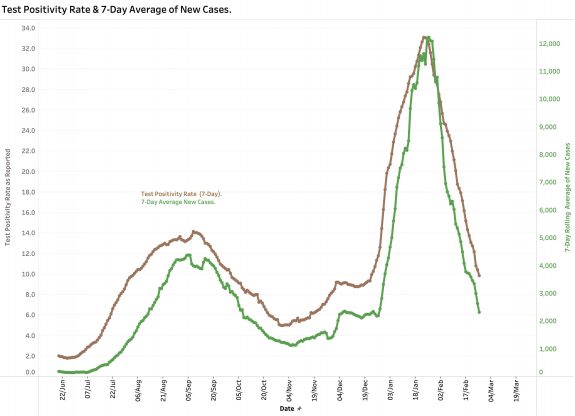
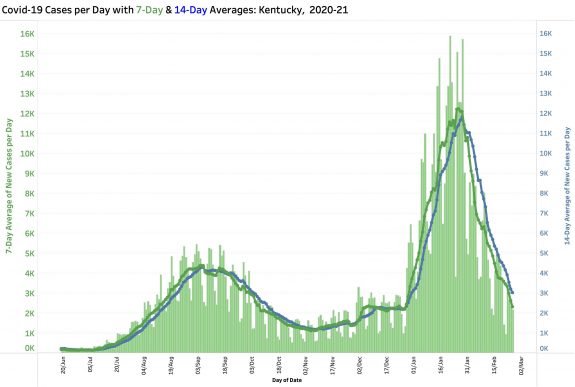
Testing down but still considerable.
Fewer Kentuckians are presenting themselves for testing in places where the results are reported to Kentucky’s various Public Health Departments, but a 7-Day average of around 30,000 is nothing to sneeze at. It has been a demonstrable fact that the number of cases discovered is linked strongly to the number of tests done. That is to say, the more tests performed, the more cases will be discovered. We must assume that there are more cases of Coronavirus infection in Kentucky than we have counted, be they symptomatic or not.
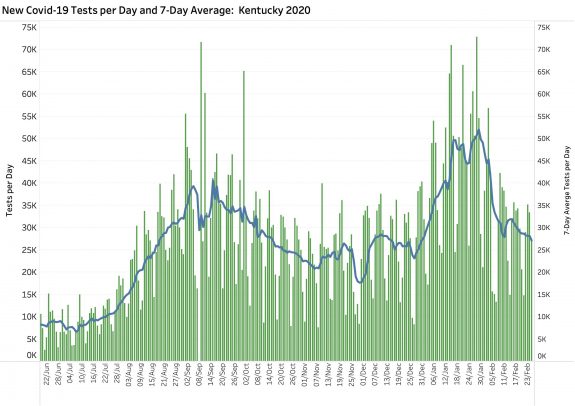
Test positivity rate calculated in different ways going down too.
The Test Positivity Rate as calculated by the KYDPH was in the single digits Friday at 9.9%, the first time since the onset of the Omicron surge in December. The positivity rate calculated daily from all types of tests is also less than 10. Still, this means that one out of every 10 Kentuckians who get a test outside of their home is actively infected! Disturbingly– at least to me– is that for Kentuckians 18 and under, one in four of these school-age individuals who have their test results reported to the state are infected with the current strain of Coronavirus and have been since last summer.
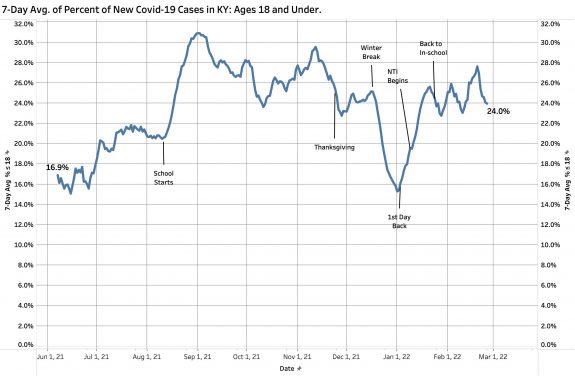
Hospital and ICU bed utilization continue to fall progressively as does ventilator utilization for COVID-19 patients. It is fair to say that hospitals and their staffs are still under considerable pressure, some more than others. Still, this is another good sign that what we have been doing as a community is working. [Nag warning- We could be doing better!]
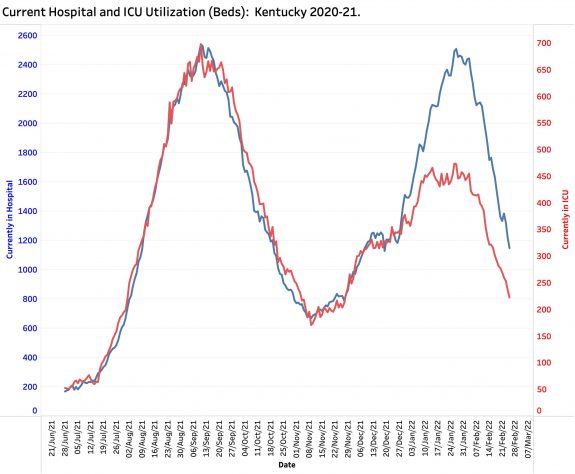
Deaths.
Because we are still under the peak of accumulating new cases, what will happen with deaths remains indeterminate. The most elderly of the vulnerable have either been infected, died, or been vaccinated. Mathematically, even if the Omicron is not as deadly at Delta or Alpha, this means that more of the dead yet to be counted will be younger than we have experienced up to now.
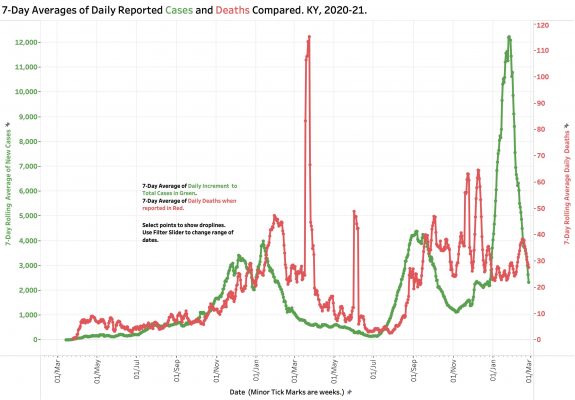
We will not know the future until it becomes the past.
The Omicron strain of the virus is not the most recent one. A related variant [which I dub Omicron Jr. until or unless it gets a new designation] has proven itself globally to be more contagious than Omicron just as Omicron proved to be more infections than Delta. It is already present in all 50 states. That means inevitably that it will show itself all over Kentucky. The impact and outcome of this most recent round of whack-a-mole epidemic management remains to be seen. There is no doubt in my mind that traditional and new public health initiatives have been effective in fending off this most recent plague. Government and public health officials have been under tremendous political and social pressures to back away even from the basics and are doing so. There will be surges to come of this and other infectious diseases. We need to be able to see them coming and able to react. Dismantling our public health system or limiting the few tools we have available to protect ourselves is the last thing we should be doing. What we do or restrict now will shape our available responses for decades to come.
It is frankly frightening to me that we as a community seem to be willing to normalize where we are now. Wearing a mask and not coughing in your neighbors’ face will kill neither you or your neighbor. Coronavirus– in whatever disguise it appears now or in the future– can and will.
Peter Hasselbacher, MD
Emeritus Professor of Medicine, UofL
26 February 2022
